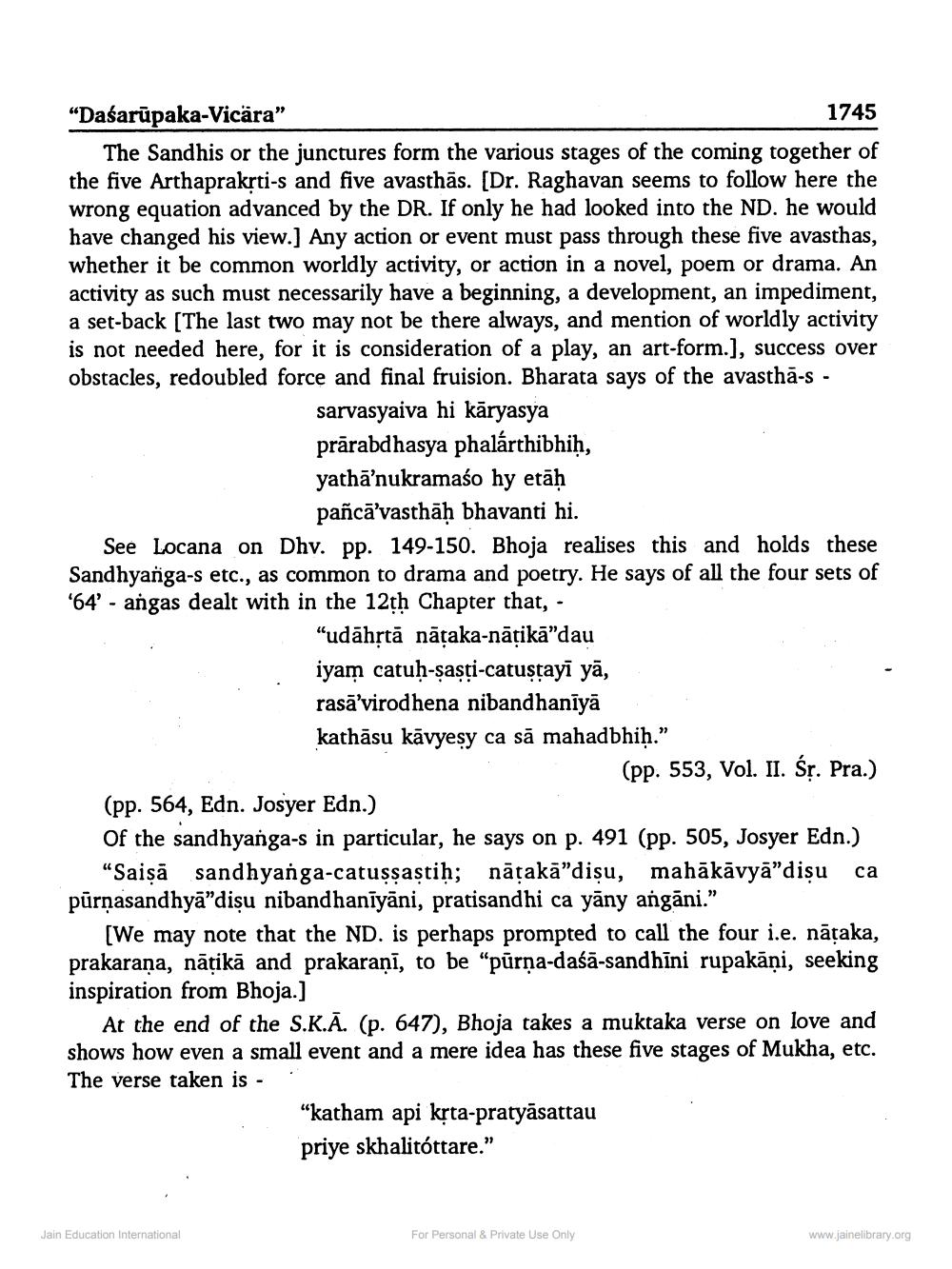________________
“Daśarūpaka-Vicara”
1745 The Sandhis or the junctures form the various stages of the coming together of the five Arthaprakrti-s and five avasthās. (Dr. Raghavan seems to follow here the wrong equation advanced by the DR. If only he had looked into the ND. he would have changed his view.] Any action or event must pass through these five avasthas, whether it be common worldly activity, or action in a novel, poem or drama. An activity as such must necessarily have a beginning, a development, an impediment, a set-back (The last two may not be there always, and mention of worldly activity is not needed here, for it is consideration of a play, an art-form.], success over obstacles, redoubled force and final fruision. Bharata says of the avasthă-s -
sarvasyaiva hi kāryasya prārabdhasya phalárthibhiḥ, yathā’nukramaśo hy etāḥ
pancā’vasthāḥ bhavanti hi. See Locana on Dhv. pp. 149-150. Bhoja realises this and holds these Sandhyañga-s etc., as common to drama and poetry. He says of all the four sets of '64' - angas dealt with in the 12th Chapter that, -
"udāhrtā nāțaka-nātikā"dau iyam catuh-sasți-catusţayi yā, rasā’virodhena nibandhanīyā kathāsu kāvyesy ca să mahadbhiḥ."
(pp. 553, Vol. II. Śt. Pra.) (pp. 564, Edn. Josyer Edn.) Of the sandhyanga-s in particular, he says on p. 491 (pp. 505, Josyer Edn.)
“Saisā sandhyanga-catussaștih; nāțakā"dișu, mahākāvyā”dişu ca pūrnasandhyā"disu nibandhanīyāni, pratisandhi ca yāny angāni.”
[We may note that the ND. is perhaps prompted to call the four i.e. nāțaka, prakarana, nātikā and prakaraṇī, to be “pūrņa-daśā-sandhīni rupakāņi, seeking inspiration from Bhoja.]
At the end of the S.K... (p. 647), Bhoja takes a muktaka verse on love and shows how even a small event and a mere idea has these five stages of Mukha, etc. The verse taken is -
"katham api kịta-pratyāsattau priye skhalitóttare."
Jain Education International
For Personal & Private Use Only
www.jainelibrary.org




